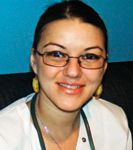- Case-Based Roundtable
- General Dermatology
- Eczema
- Chronic Hand Eczema
- Alopecia
- Aesthetics
- Vitiligo
- COVID-19
- Actinic Keratosis
- Precision Medicine and Biologics
- Rare Disease
- Wound Care
- Rosacea
- Psoriasis
- Psoriatic Arthritis
- Atopic Dermatitis
- Melasma
- NP and PA
- Skin Cancer
- Hidradenitis Suppurativa
- Drug Watch
- Pigmentary Disorders
- Acne
- Pediatric Dermatology
- Practice Management
- Prurigo Nodularis
- Buy-and-Bill
Article
A legion of lesions: Older patients commonly present with multiple basal cell carcinomas
Author(s):
Multiple basal cell carcinomas of several different types can also occur in the same patient, as seen in a recent case study.

Key Points

Older patients commonly present with multiple BCCs of different types, and due to advanced age, such patients may require certain considerations when choosing an appropriate therapy.
Excisional surgery with subsequent reconstructive surgery - where necessary - is often the preferred choice of treatment, particularly for larger BCCs, according to Roxana Homolka, M.D., department of dermatology and venereology, Universitatea de Vest din Timisoara, Romania.
In a recent case study, Dr. Homolka saw a 75-year-old female who presented with a four-year history of multiple BCCs of various types.
Primary skin examination revealed two ulcerated, nodular, pigmented BCCs located on the left cheek (2 cm x 2.5 cm) and right nasal ala (3 cm x 3 cm), respectively, as well as a superficial BCC (8 cm x 10 cm) located on the back and cystic BCC (3 cm x 4 cm) on the sternum area.
"What was rather intriguing about this particular case was that the patient presented with three different types of BCCs.
"Also, the lesions were found in areas exposed to the sun, as well as in covered areas such as the back," Dr. Homolka says.
The BCC lesions on the back and sternum were treated with wide excision and primary closure under local anesthesia. Both of the lesions on the cheek and nose were first treated with excision, followed by split-thickness skin grafting. Histopathology results revealed aggregates of palisading neoplastic baseloid cells extending into the dermis, confirming the diagnosis of BCC.
Surgical excision
"We believe that surgical excision is indicated for the removal of both small and large tumors, because this approach can best prevent tumor recurrence.
"Although other, less invasive approaches, such as electrocautery or cryotherapy, are sometimes more preferred compared to excisional surgery, they are more often associated with a higher rate of recurrence," Dr. Homolka says.
Excisional surgery is good treatment modality for BCC of the nose, Dr. Homolka says, because this approach is associated with few side effects, short hospitalization and a low rate of recurrence.
Because the nose differs from other anatomical locations in that it consists of skin, cartilage and skeleton, the reconstruction of nasal lesions requires more meticulous planning and careful selection of surgical procedures.
Special considerations
According to Dr. Homolka, older patients require special considerations when choosing therapy, mostly because of the higher frequency of internal pathologies associated with geriatric patients including heart failure, diabetes and chronic liver diseases.
Therefore, the choice of therapy may significantly depend on the constellation of their co-morbidities. Local anesthesia may be quick and practical; however, Dr. Homolka says that the anesthetic may cause cardiac arrhythmias in the patient. As a result, in some cases, general anesthesia may be the "safer" approach.
Grafting
Each therapeutic avenue can have its advantages and disadvantages, so choices must be carefully weighed.
Flaps and grafts are often used when treating larger lesions for aesthetic reasons, as well as for challenging anatomic locations such as the nose.
Aside from the clear aesthetic advantage, Dr. Homolka says that grafting is the best treatment choice for invasive BCCs and for tumor recurrences following radiotherapy or tumors resistant to radiotherapy.
"Mohs surgery is considered to be the gold standard for the treatment of most types of basal cell carcinomas, as the recurrence rates are lowest with this approach.
"However, we saw that though Mohs surgery was not employed in our patient, an excellent outcome was achieved with simpler surgical methods, underscoring the effectiveness of more traditional surgical approaches," Dr. Homolka says.





